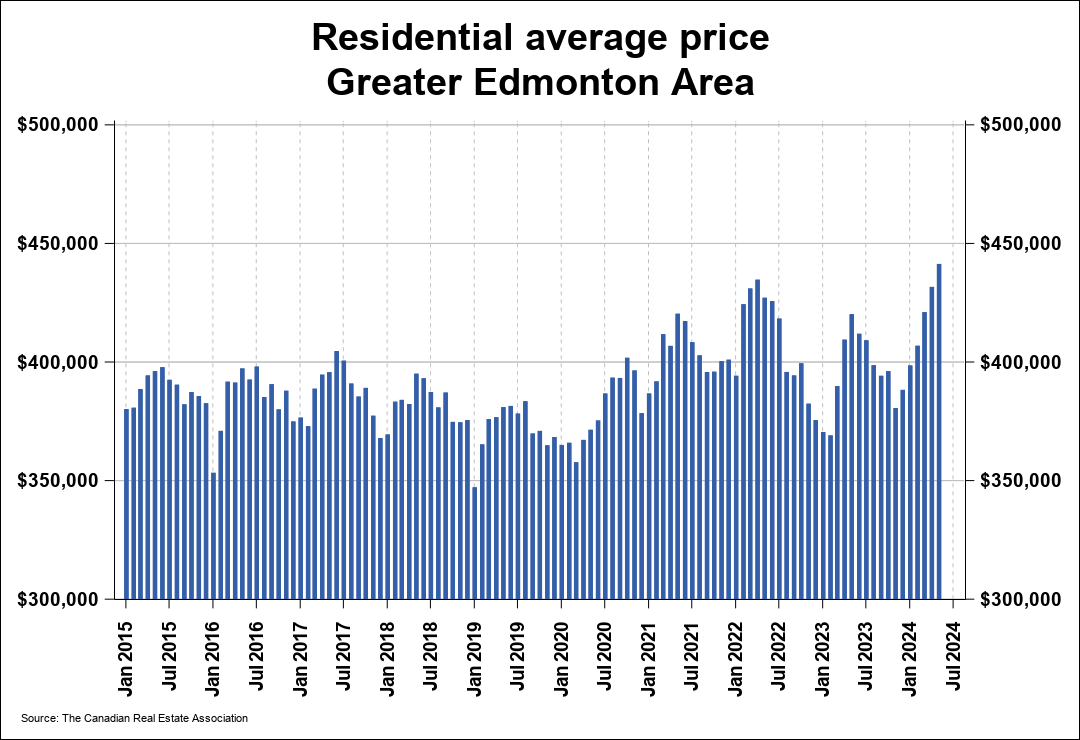Edmonton House Prices Over the Last 10 Years
The housing market is often a reflection of a city's economic health and demographic trends. Edmonton, known for its vibrant cultural scene and rich history, has seen its real estate market evolve significantly over the past decade. For homebuyers and real estate investors, understanding these trends is crucial for making informed decisions. Let's take a detailed look at how Edmonton house prices have changed over the last ten years, referencing data from the Edmonton Real Estate Board and Statistics Canada.
Overall Trends in Edmonton House Prices

The Peaks and Troughs
Over the past decade, Edmonton's housing market has experienced both high and low points. The early 2010s were marked by relatively stable growth, driven by a strong local economy bolstered by the oil industry. However, the market faced a downturn around 2015-2016, coinciding with a significant drop in oil prices. This period saw a decrease in housing prices as the local economy struggled.
Recently, the market has started to recover, with house prices slowly climbing back up. The COVID-19 pandemic initially caused some uncertainty, but the market proved resilient, bouncing back as interest rates remained low and demand for housing increased.
Impact of Current Interest Rates
As of now, the interest rate for a 5-year fixed mortgage stands at approximately 4.69%. This is a critical factor influencing the housing market in Edmonton today. Compared to the historically low rates seen in the aftermath of the COVID-19 pandemic, this current rate presents a more expensive borrowing environment for potential homebuyers. Higher interest rates mean larger monthly mortgage payments, which can deter some buyers from entering the market or force others to opt for less expensive homes.
Consequently, while there is still demand for housing, it may not be as robust as it was during periods of lower interest rates. For sellers, this could mean longer times on the market and a potential need to adjust pricing expectations. For the broader market, the interplay between interest rates and housing demand remains a key dynamic to watch.
Neighbourhood Comparison
Rising Stars and Stable Grounds
Different neighbourhoods in Edmonton have shown varied trends in house prices. For instance:
- Windermere has seen a steady increase in prices, making it one of the more desirable areas for new homebuyers.
- Oliver and Downtown have shown stable trends with moderate price increases, appealing to those looking for urban living.
- Mill Woods offers a more affordable option, with prices remaining relatively stable but showing slow growth.
Growth in Developing New Neighbourhoods
Edmonton has undergone significant expansion in the development of new neighbourhoods, reflecting the city’s commitment to accommodating its growing population and enhancing quality of life. Over the past decade, several new communities have emerged, offering modern amenities, diverse housing options, and vibrant social environments. Areas like Ellerslie, Ambleside, and Secord have blossomed with new residential and commercial developments, making them attractive choices for families, young professionals, and retirees alike. This growth is supported by strategic urban planning initiatives that prioritize sustainability, green spaces, and connectivity, ensuring that Edmonton’s new neighbourhoods are not only comfortable but also eco-friendly and well-integrated into the city's overall infrastructure.
Influencing Factors
Economic Changes
Edmonton's real estate market is heavily influenced by the local economy. The oil industry, being a major economic driver, has had a pronounced impact on house prices. The downturn in oil prices around 2015 led to a noticeable dip in the housing market, reflecting the broader economic challenges faced by the region.
Population Shifts
Population growth and demographic changes also play a role in shaping housing demand. Edmonton has seen steady population growth, attracting new residents due to its employment opportunities and quality of life. This influx has contributed to the rising demand for housing, particularly in newer neighbourhoods and suburban areas.
Government Policies
Government policies, such as changes in mortgage regulations and incentives for first-time homebuyers, have also influenced the market. These policies can either stimulate demand by making it easier for buyers to enter the market or cool it down by tightening lending standards.
Future Projections
Expert Insights
Looking ahead, experts predict that Edmonton's housing market will continue to recover, with prices expected to rise gradually. Factors such as sustained population growth, economic diversification efforts, and moderate interest rates are likely to support this trend. However, potential risks such as fluctuations in the oil market and global economic uncertainties could impact this outlook.
Conclusion
Understanding the trends and factors influencing Edmonton's housing market over the past decade provides valuable insights for homebuyers and real estate investors. Whether you're looking to buy your first home or invest in real estate, staying informed about these trends is key to success.
Ready to explore the Edmonton housing market further? Contact us today to connect with experienced real estate professionals who can guide you through every step of the process.
Posted by Admin . on

Leave A Comment